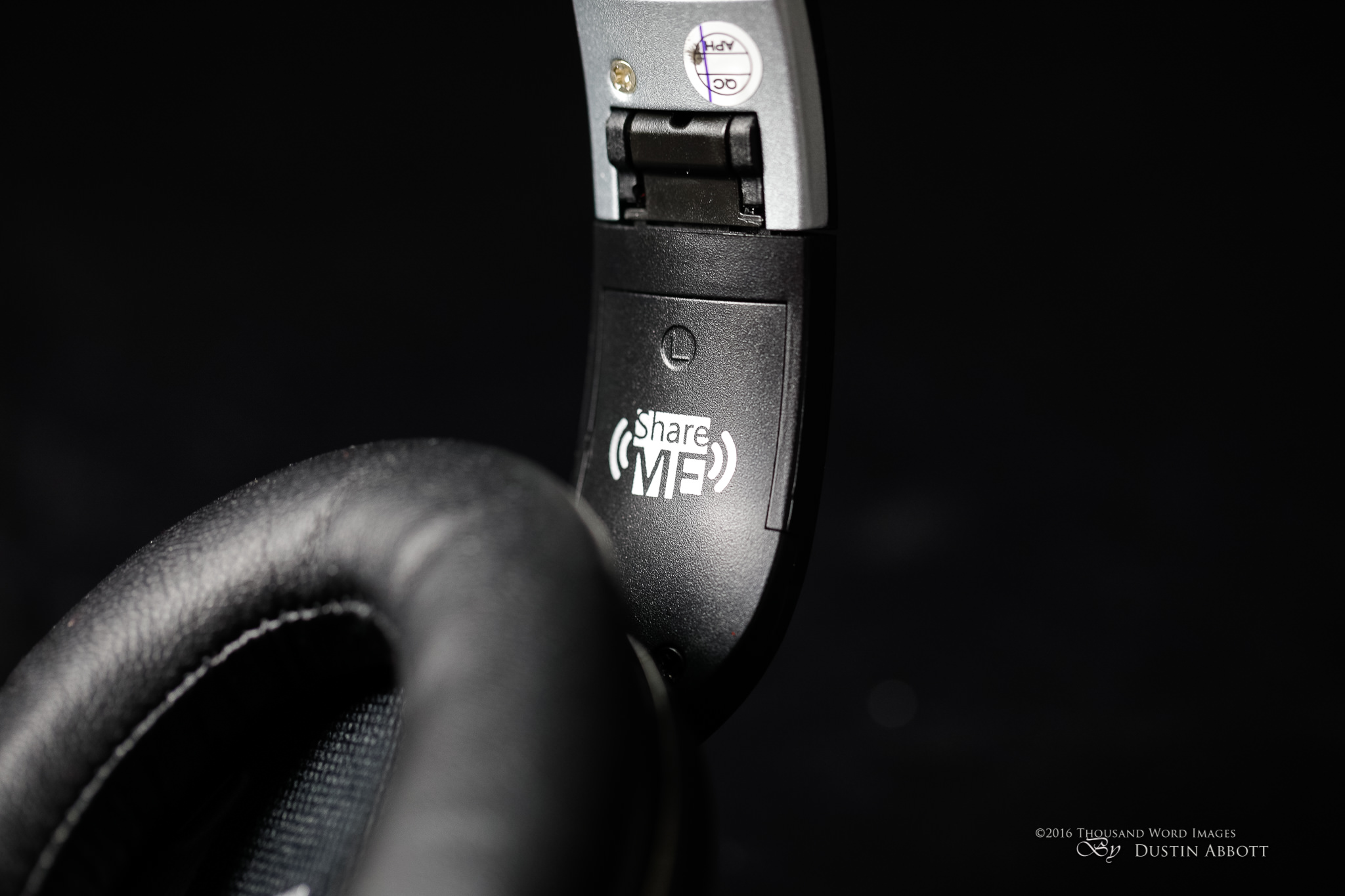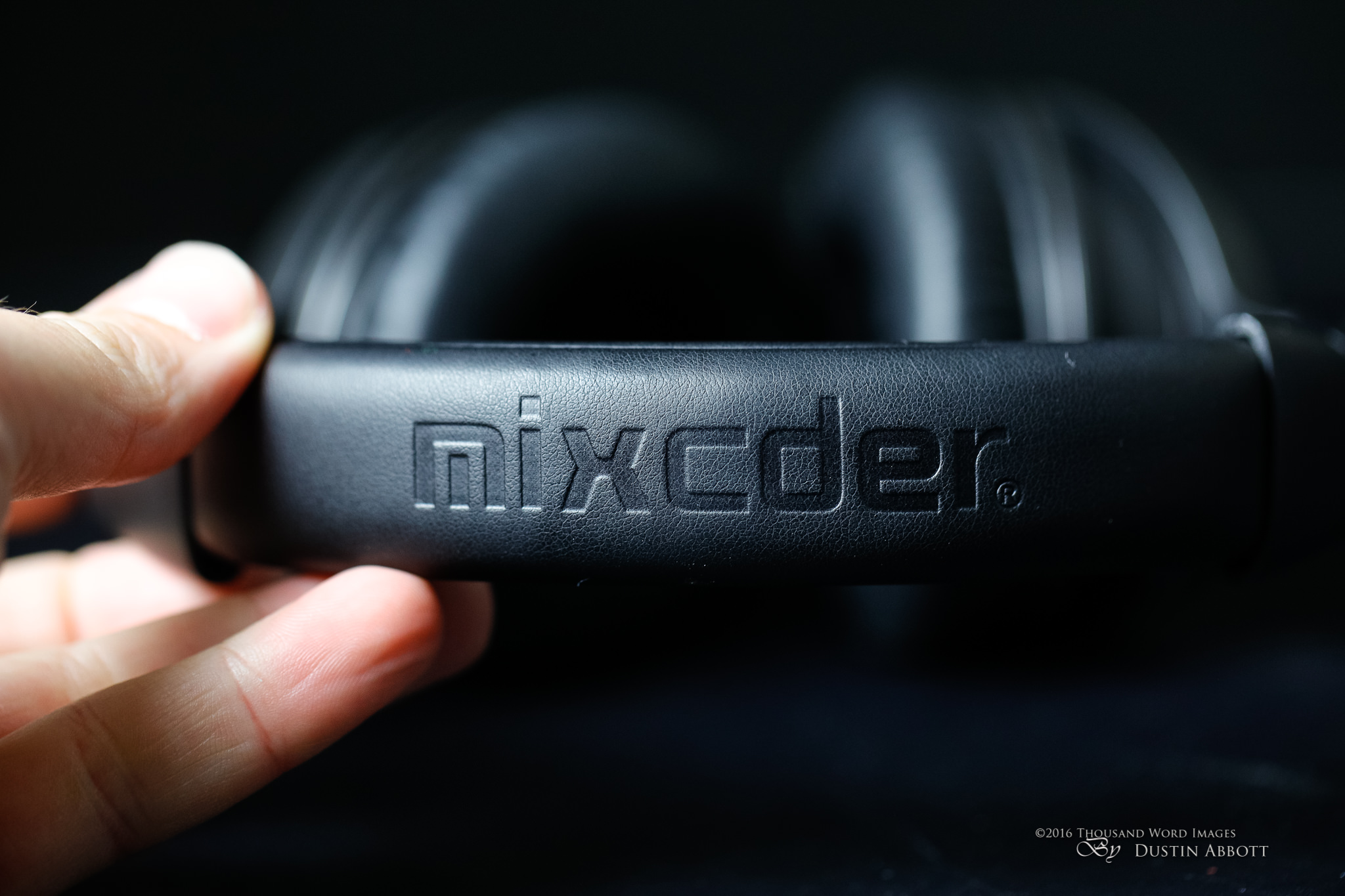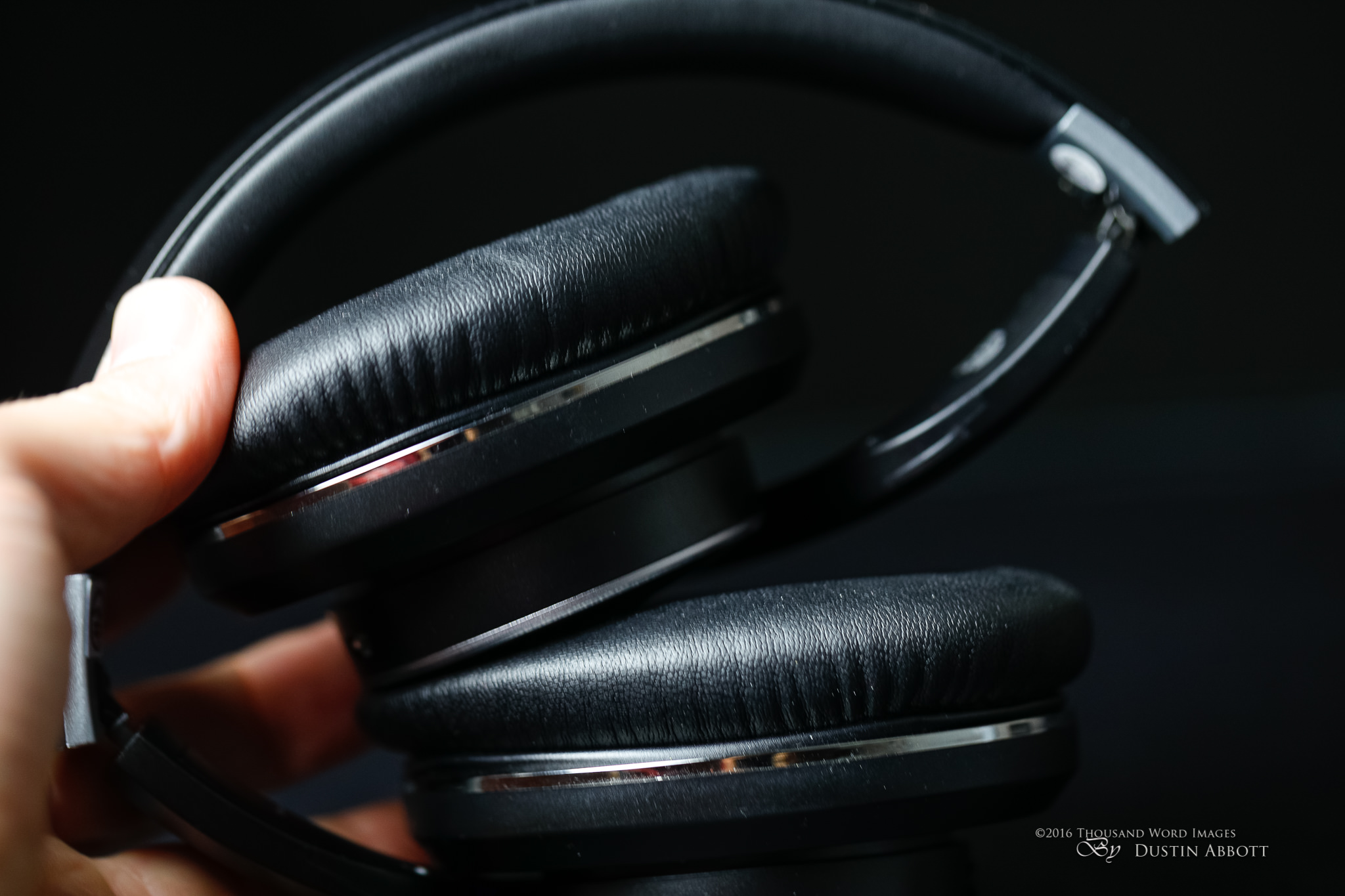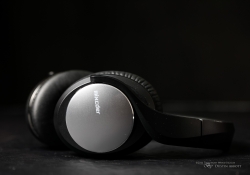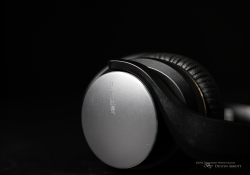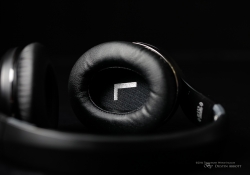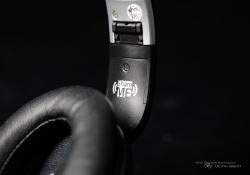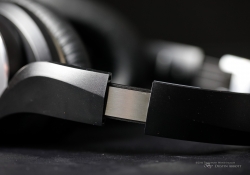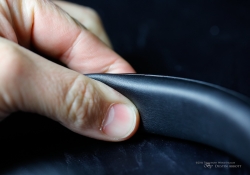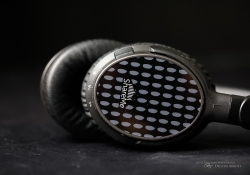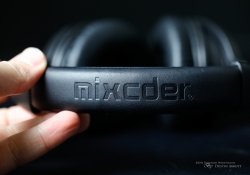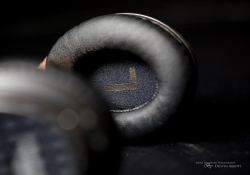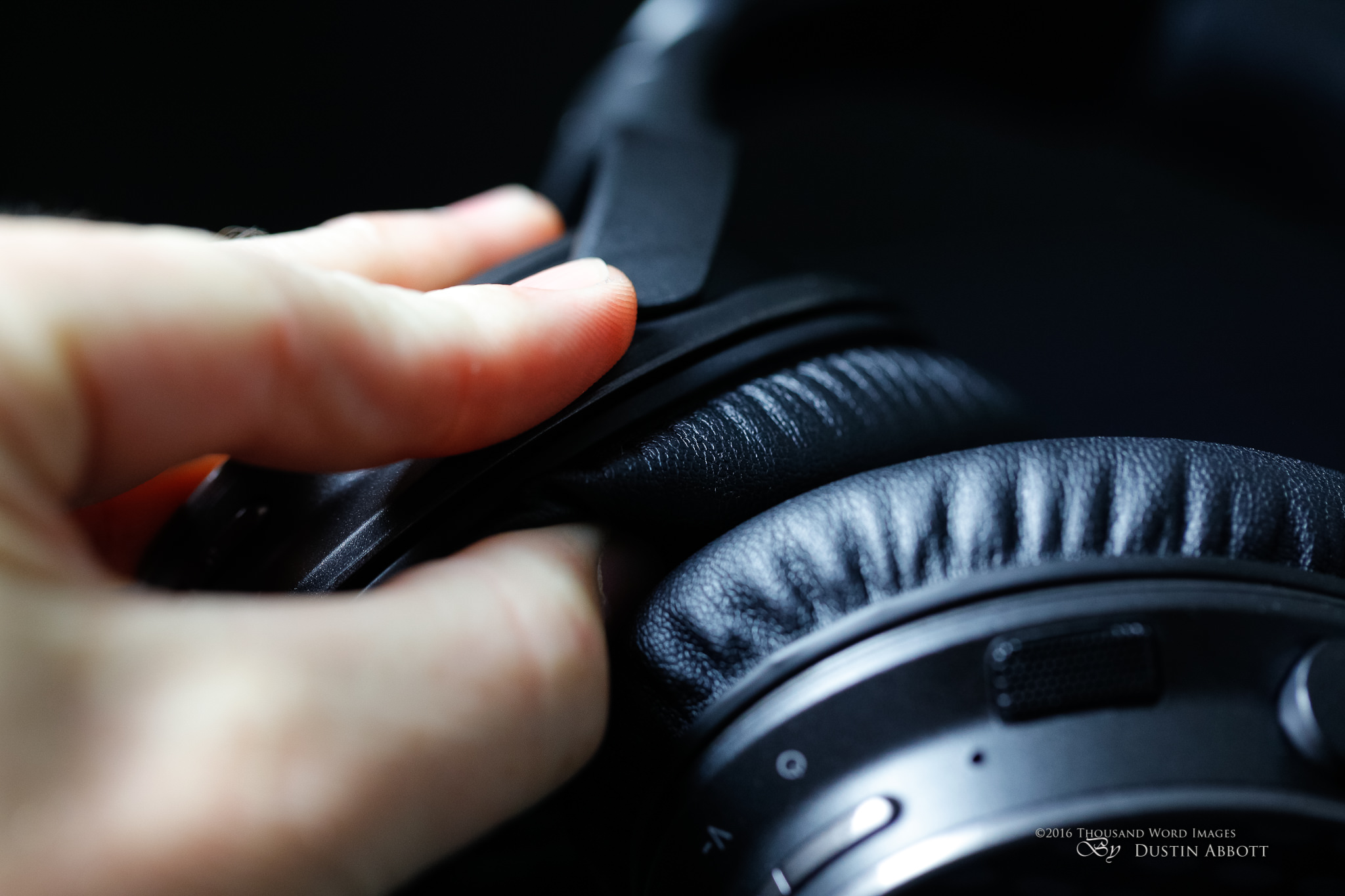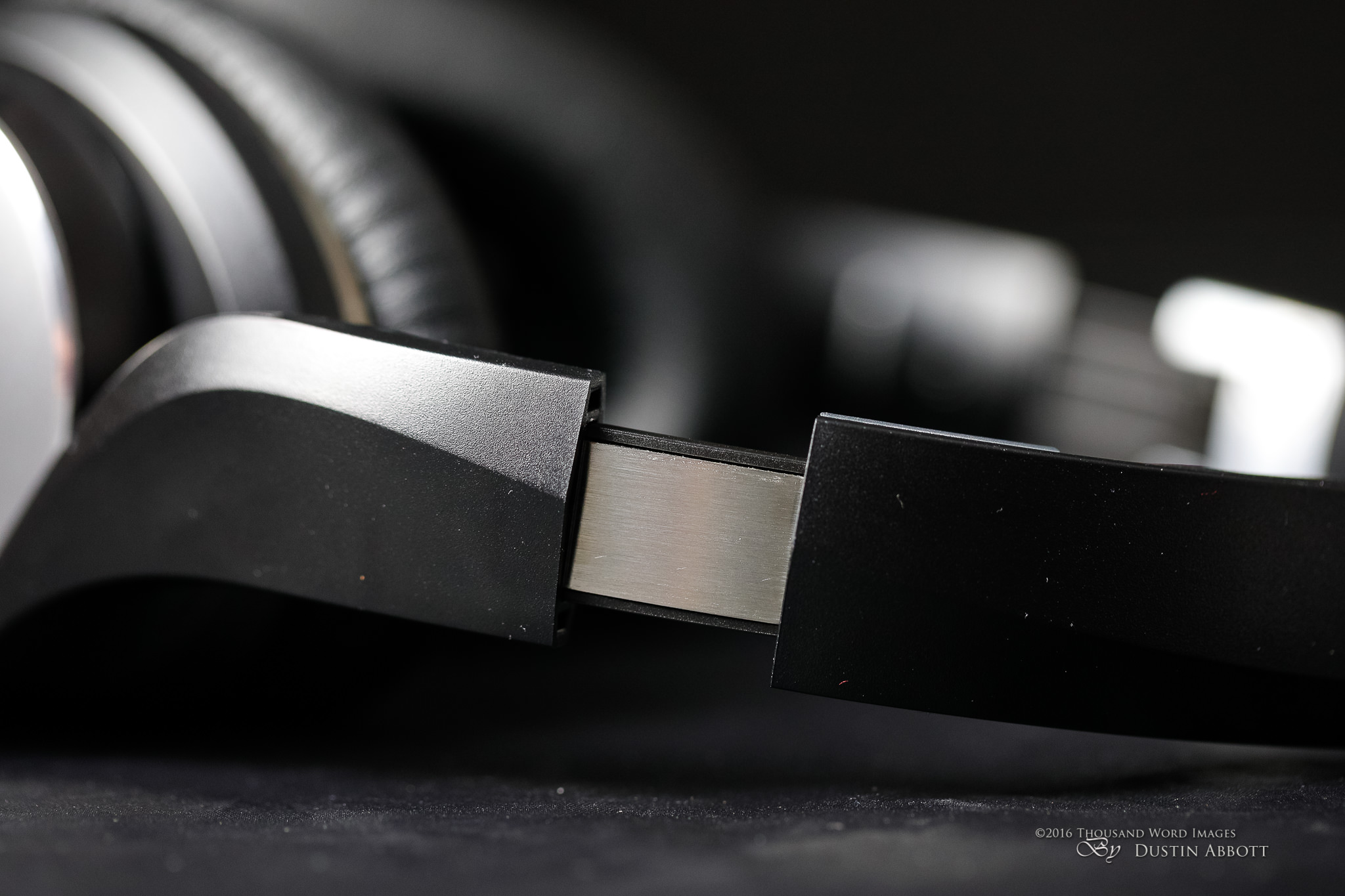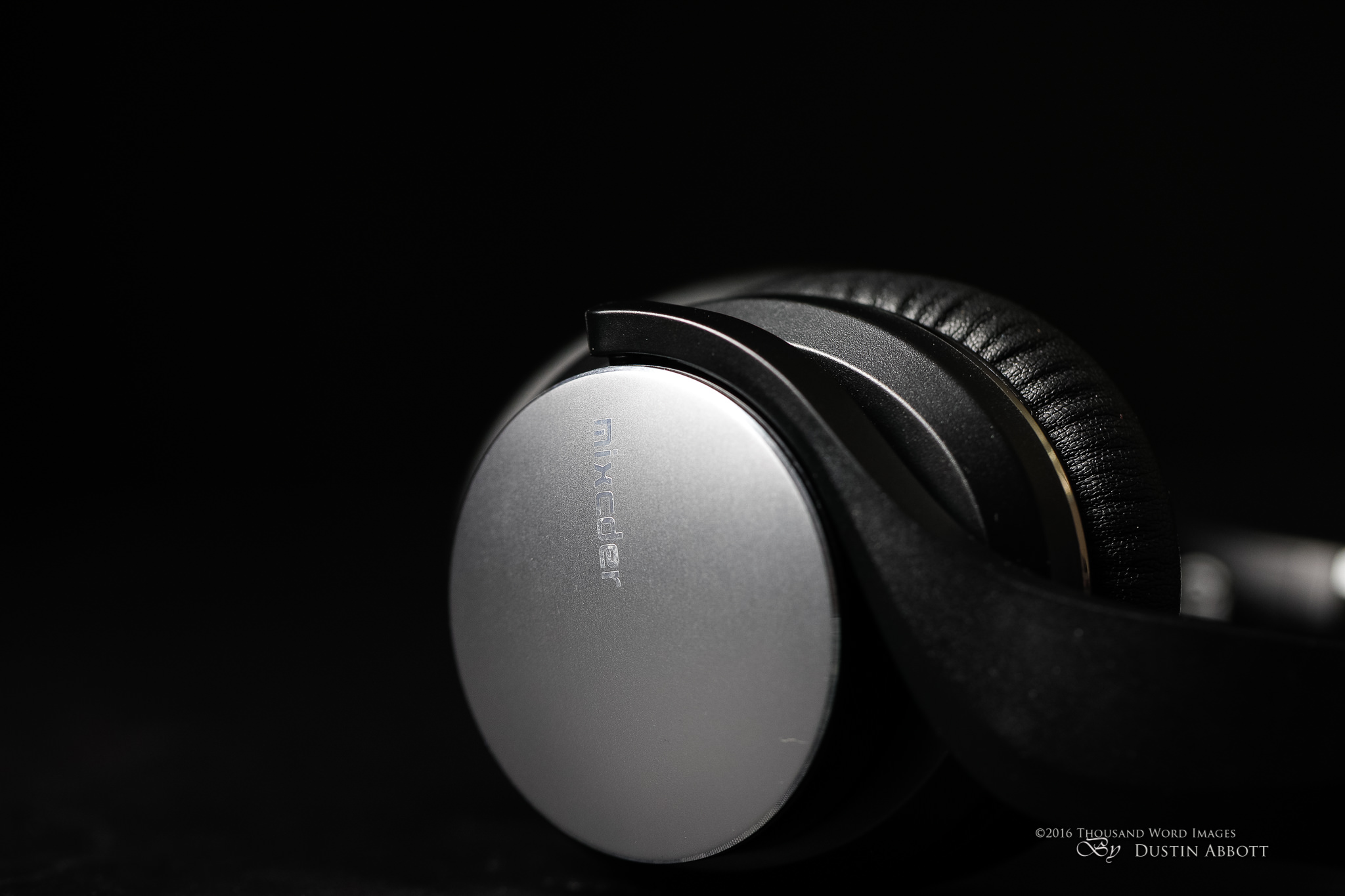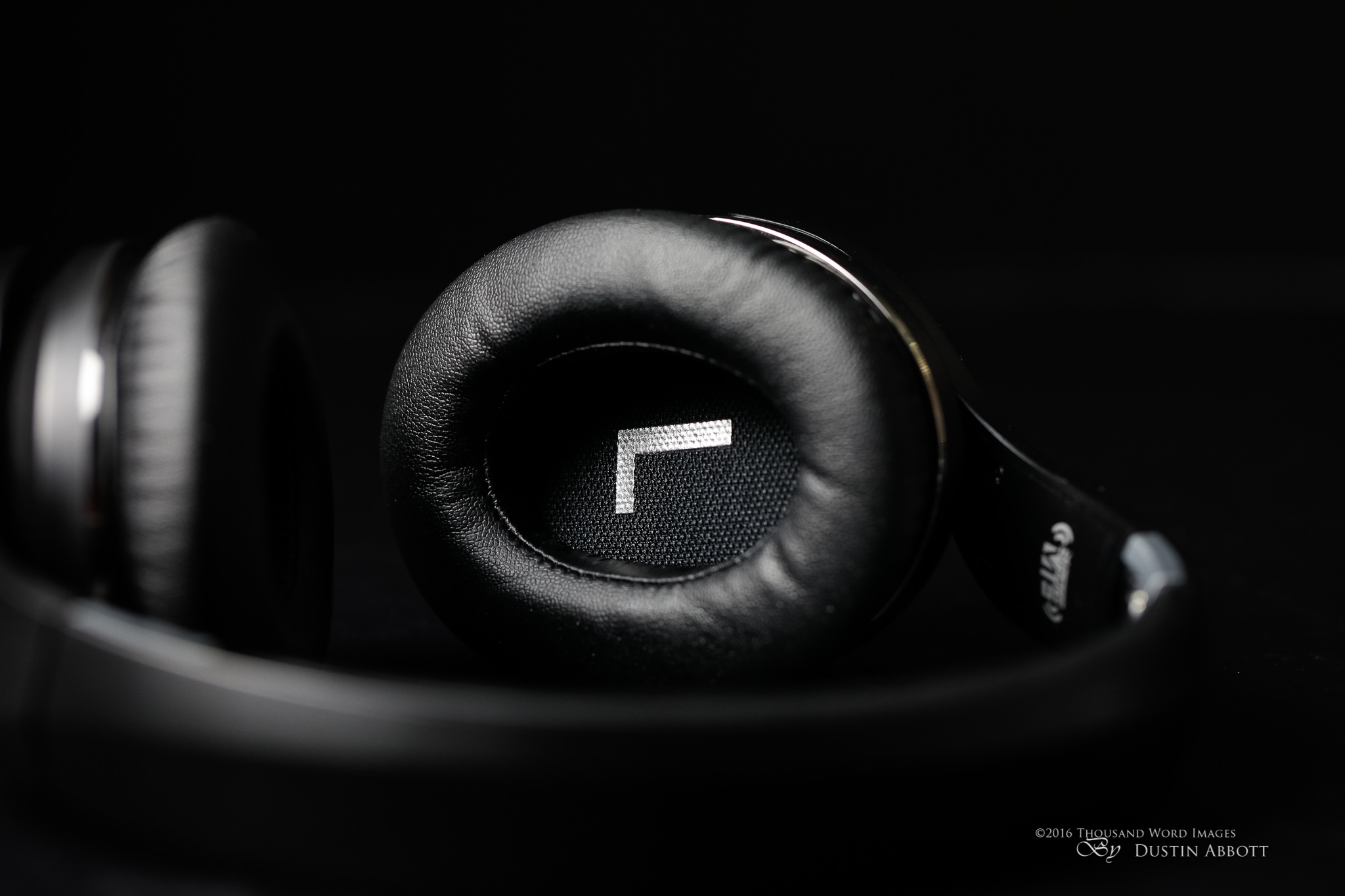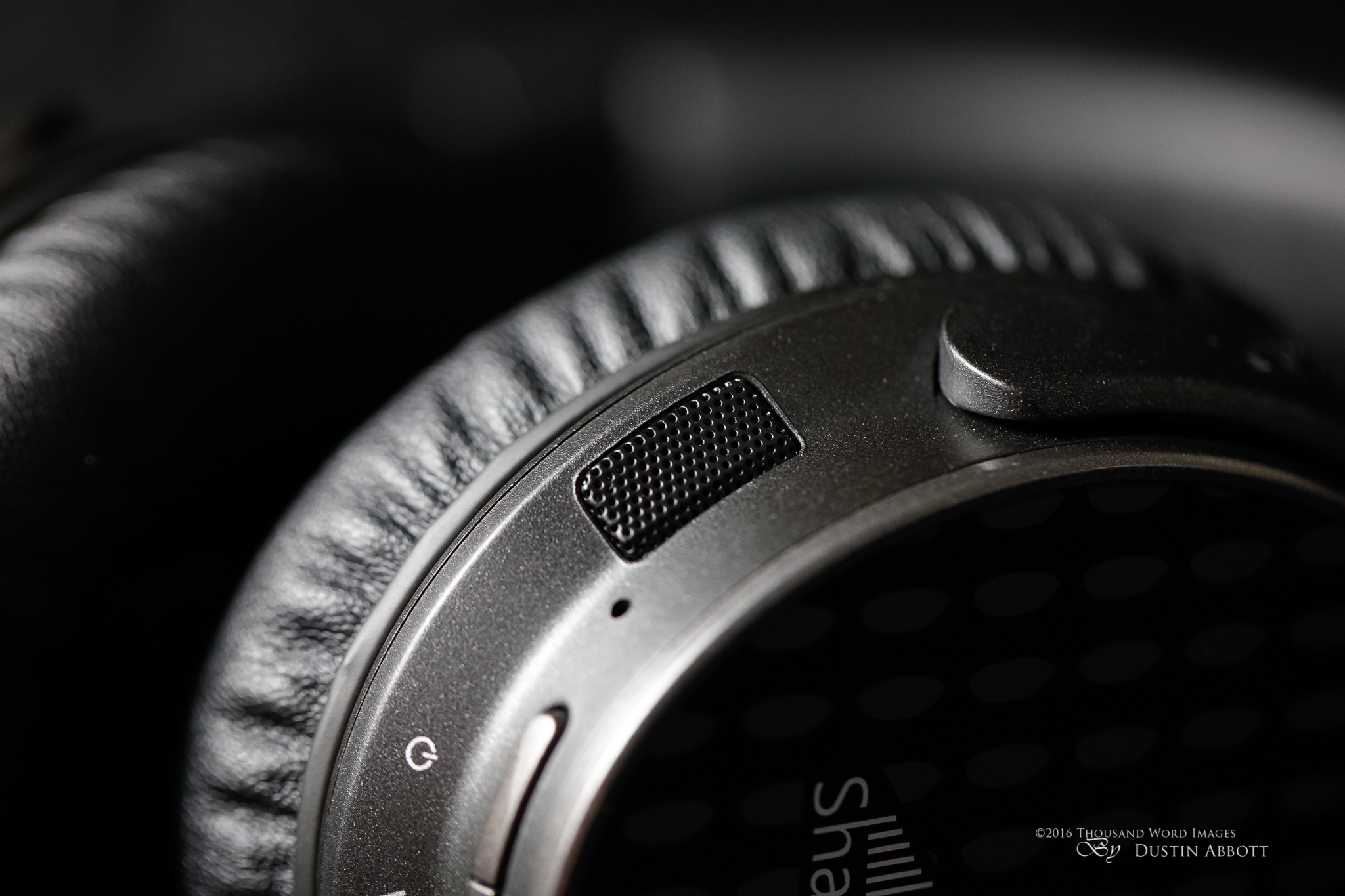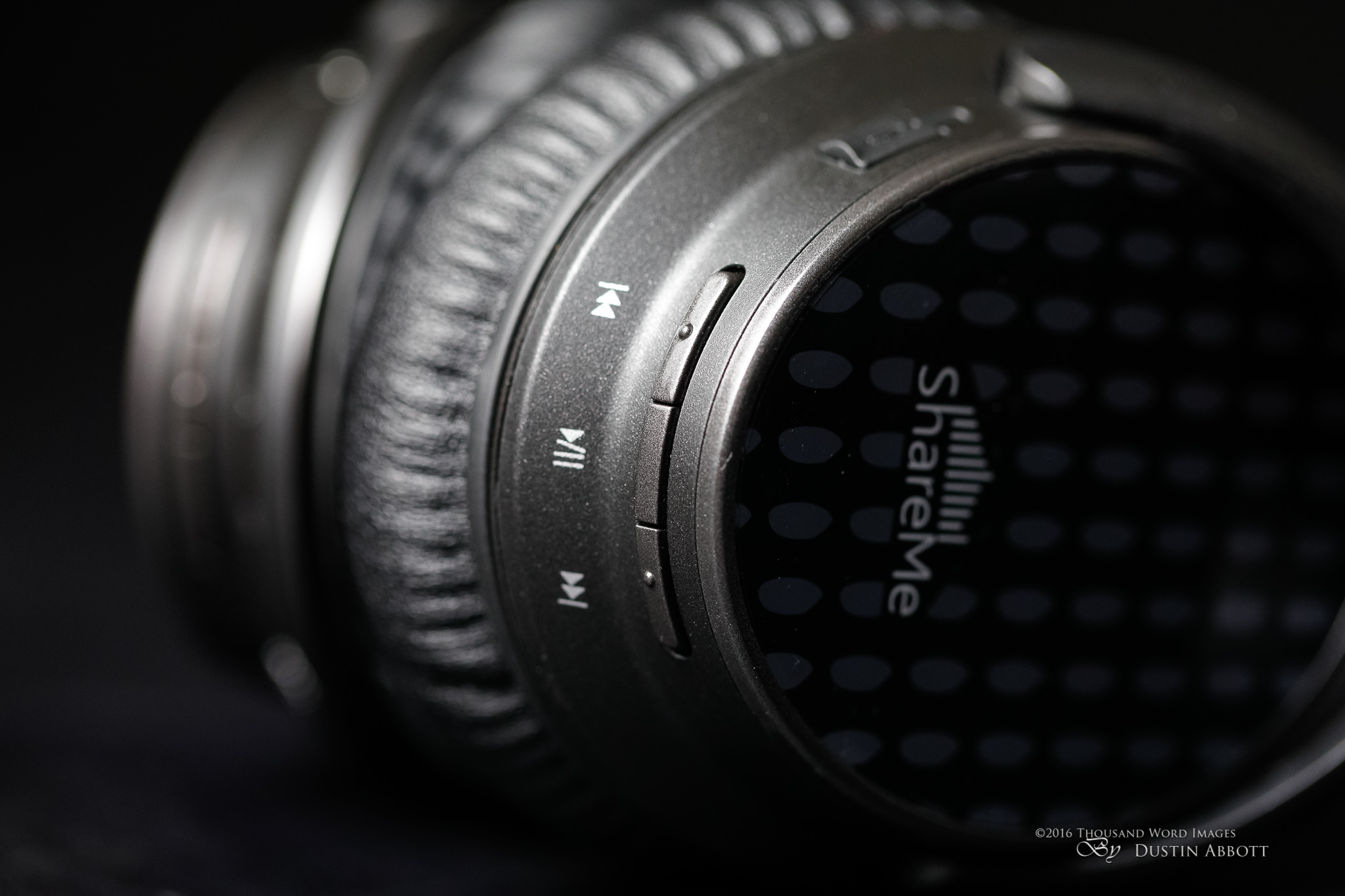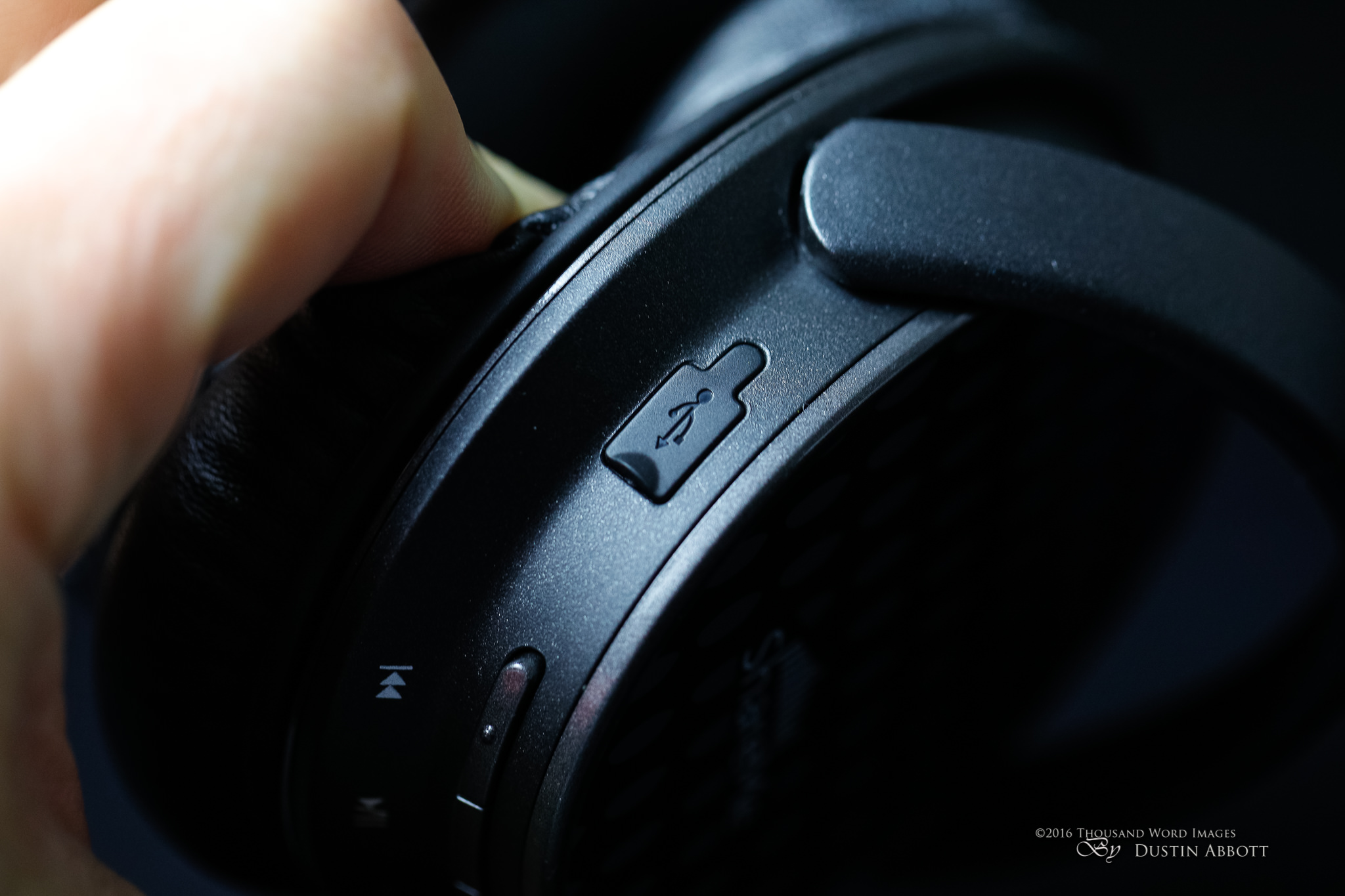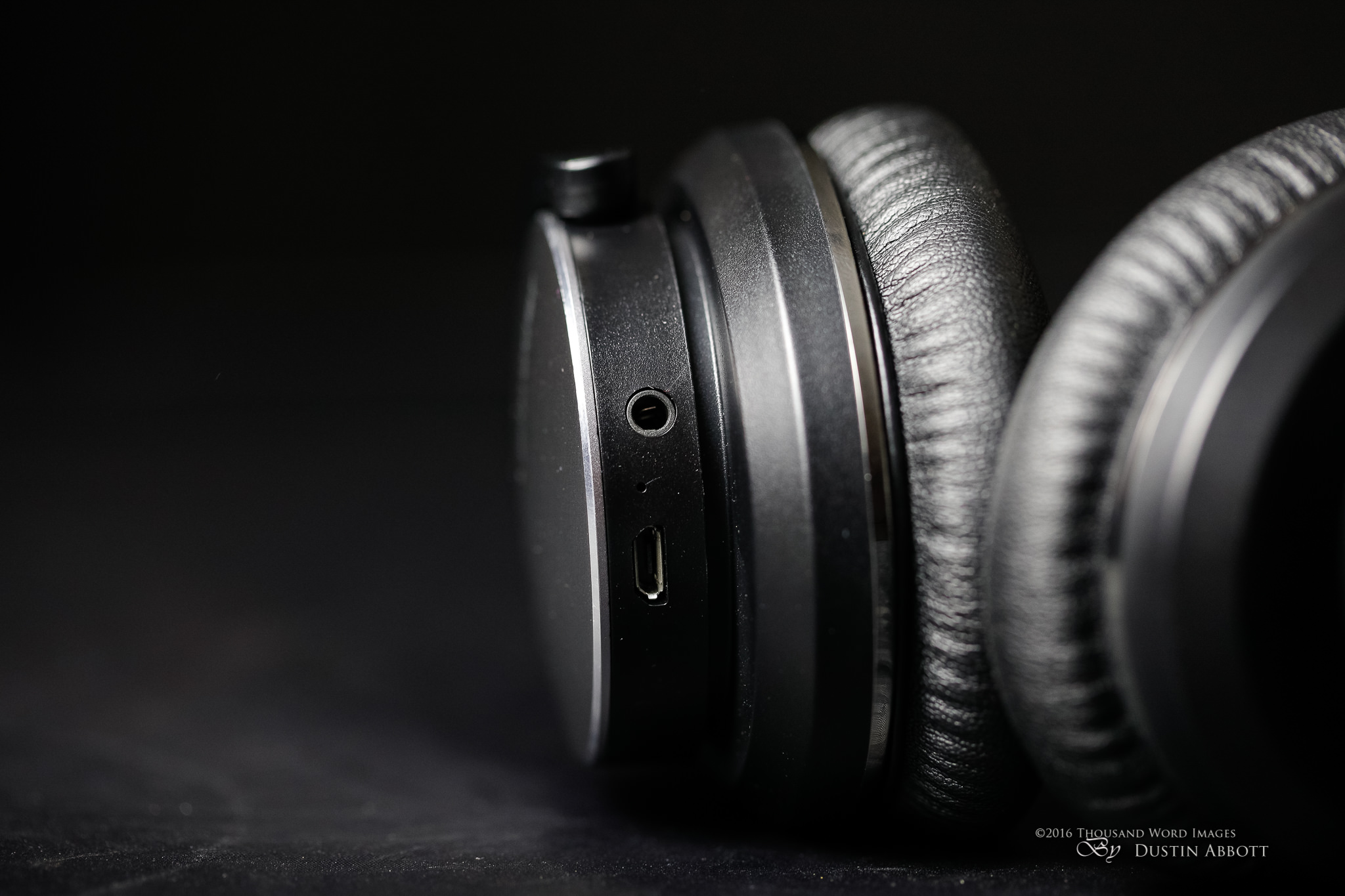ShareMe Concept
I get invitations from various companies to review their headsets, headphones, and speakers pretty often (usually several invites a week). Because my primary review focus in on photography, I often decline those invitations, but I do typically take a few moments first to check out the product and see if it stands out from the crowd in any way. I love music, and I have to confess to being a bit of sucker for a good pair of headphones (which may be why I already own a dozen or so!!) So, when I received such an invitation recently to review some new headphones from Mixdcer, my initial reaction was a plan to decline…until I looked at the product descriptions and saw some tech that interested me. In this case it was the ShareMe concept from which these headphones get their name.
The whole concept behind the ShareMe headphones is interesting as [on paper] it seems to solve one of the basic problems with Bluetooth headphones – that direct digital connection precludes the ability to split the audio stream to multiple sources like the old Y-splitter that we used to plug into the headphone jack. Going Bluetooth often means no longer being to share your audio with a friend. But the whole concept behind the ShareMe line is the ability to connect multiple ShareMe headsets to the same audio source.
While this may not be something that I personally need very often, my mind immediately went to my children. The ability to share an audio/video source on a long trip via car or plane could be pretty huge. I could picture them huddled together looking at an iPad with a nice set of headphones on each head.
Add to this that the Mixcder Flyto headphones did really well in my recent “Buds on a Budget” showdown of Bluetooth earbuds. They offered the best blend of battery life and features, so I agreed to review the ShareMe line. I specifically asked for the ShareMe 5 and ShareMe Pro headphones to be sent to me.
Want to watch your review? I’ve got you covered here.
Advantages of Over Ear Headphones
While I often value portability in a headphone and tend to either use earbuds or smaller over the ear headphones, there are definitely some intrinsic advantages to their bigger brothers like these.
- Sound quality. It’s hard to beat bigger open back headphones for overall sound quality.
- Battery life. Bigger headphones means more room to put batteries. The ShareMe 5’s have a rating of 16 hours of playback while the ShareMe Pro’s have a rated 20 hours of playback time. In my recent Bluetooth earbud showdown the top performer had 8 hours of playback time while most of the contenders had 4-6 hours of playback time. Clearly the larger headphones are in a completely different battery life class. You can listen to these headphones for a long time before needing to recharge.
- Bluetooth Signal strength. One of the most frustrating things about Bluetooth headphones is their proclivity for cutting out if you stray from your device or sometimes even if you turn your head the wrong way. Larger headphones like this have more room to correctly place Bluetooth chipsets and receivers, and the end result is a stronger Bluetooth signal and excellent range. I often wonder off around the house away from my music device and I’m always surprised by how perfectly these headphones maintain their signal.
There is one major weakness of over the ear headphones as opposed to buds, however. They are not nearly as portable. The ShareMe 5’s have an advantage here over the Pro’s; the 5’s are hinged so that they can be folded in for storage and take up less room. The Pro’s lack that capability. Neither headset comes with a pouch or case for storage, so that’s a bit of a negative for them both.
Names are an interesting thing. When I requested the ShareMe 5 and Pro headphones my assumption was the that the Pro’s would be the standout. After using them both, however, the final answer is a little more complicated. The Pro’s are the flagship in terms of features, battery life, and name. The ShareMe 5 were released after the Pro, however, and as a result have a few tweaks that are probably the result of user feedback and in some ways results in a more comprehensive, user friendly package.
Design, Build, and Appearance
Case in point – their appearance. I’ve already noted that 5’s advantage in being able to fold the ear cups up to more them more compact for transport. But the design of the two headphones has some give and take; neither is the clear standout. The backs of both headphones are different in size, shape, and finish. The ShareMe Pro backs have an oval shape in a black finish with a pattern like grey raindrops repeating. They have the ShareMe logo. The overall look is a little “plasticky” to my eye. According to Mixcder’s literature, the material is actually nylon over a stainless steel “core” in the band, which is definitely preferable in terms of toughness and durability. The ShareMe 5 have a smaller, rounder back with an aluminum “look” and a “chrome” ring around the extreme edge. Instead of the ShareMe logo it has the Mixcder logo in a similar “chrome” finish. The back material is still plastic, but it looks more upscale to my eye. I give the ShareMe 5 the edge in basic appearance.
As you move up the headband the advantage shifts. The Pro headphones have thick padding on both the inside and top of the headband along with the Mixcder logo stamped into the top materials. The padding isn’t quite as thick on the inside of the 5, and neither the padding or the branding on top of top of the headband is there. The top of the headband on the 5 is just a slightly flocked texture plastic. The only ShareMe branding is on the inside of the headband on the left side. The actual headphone band edge goes to the ShareMe Pro.
The material of the earcups on both is a synthetic leather “protein”, which feels like leather but promises great durability. The inside of the ear cups are similar in size and have a similar thick padding. The different design of the ShareMe 5’s backs results in a deeper cup, which I personally feel contributes to slightly more sound isolation. In my “mowing the lawn test” neither headset matches a good set of earbuds for isolating the sound of the lawn tractor out. I like to listen to audiobooks in that kind of setting, so strong sound isolation is important. I didn’t feel like I could adequately distinguish the words with the headphones while I could using Mixcder’s own Flyto buds. For less extreme settings the sound isolation works fine.
I personally find both the ShareMe 5 and Pro headsets comfortable. The padding is soft on the ear cups and on the band above the head. I slightly prefer the fit of the ShareMe 5, which swivels left and right a bit as well as up and down to accommodate my preferred fit. The Pro headphones have a broader range of adjustment in tilt (I’d estimate about 50 degrees of tilt compared with about half that tilt range in the 5’s). In a nice touch both headphones have a large L and R screened on the mesh of the actual speaker cover inside each earpiece. It makes it very easy to immediately identify the proper way to wear them. In my use I’ve found both sets of headphones to be very comfortable for extended wearing sessions.
While they have a “plasticky” appearance (though they are nylon, not plastic), the headphones feel sturdy and well made. They are nice and light. The Pro’s weigh 8.8 ounces (249g) while the 5’s are lighter still at 6 ounces (170g). If you have a larger head, the Pro’s might provide a better fit as they have a longer range of adjustment in the band size. I’d estimate that their ability to extend is about 25% greater. In my family we were all able to get a comfortable fit with either headset.
Connectivity and Audio Performance
Bluetooth pairing was easy and straightforward with either headset. They sync up with the previous device almost instantly. Either can connect to multiple devices simultaneously (phone + media device, for example). The headline feature (ShareMe) is fortunately very easy to access.
- Make sure both headphones are powered off (and the first time, you may want to make sure that Bluetooth is turned off on your audio device).
- Place the two headsets close together (within one meter).
- Press and hold the power button for 5-6 seconds on both headsets until the LED on them flashes blue and red (pairing mode).
- The headsets will automatically pair to each other (you will hear “connected – right channel” and “connected – left channel”.
- You can then proceed to pairing one of them (the “right channel” is the primary) to the audio device (turn the Bluetooth back on with the audio device).
In the future it will be as simple as just turning on both headsets within one meter of each other and they will automatically pair. And, by the way, both headsets operate in stereo (not just left or right). The sync seems to be perfect (I held them up to both ears and couldn’t detect any lag). The headline feature works…and works well. It works fine for audio, but the one weakness is that there is a split second lag in video (this seems to be hit or miss with Bluetooth headphones anyway) that I didn’t notice with a direct (single) connection. It is only there if you look very closely, but is perceptible…at least on the ShareMe Pros. I went back and looked closely at video with ShareMe Pro models in single paired mode, and there was a bit of lag there, too. If this is an issue for you, the ShareMe 5’s are the better choice. It is worth noting that neither headset touts aptX (which sometimes helps with this), but it is clear that improvements have been made to the ShareMe 5.
It is worth noting that I didn’t detect a difference in audio quality whether one or both headphones were connected in ShareMe mode (there isn’t a quality penalty for using the ShareMe tech). Sound placement is excellent and there is a nice balance of lows, mids, and highs.
The audio performance of both headphones is excellent overall, though I personally have a slight preference for the audio from the ShareMe 5. Their specs are virtually identical. Both have a 40mm driver in the speakers and a power rating of 20mW. Their frequency response is also identical (20Hz-20,000KHz – despite an incorrect listing on Amazon that actually shows the specs for the microphone, not the headphone). Bass response seems a little stronger on the ShareMe 5 to my ear, which could be the result of the deeper ear cup. As always, though, the sound quality is a matter of taste. In my family some preferred the ShareMe 5 while others preferred the ShareMe Pro.
Both have excellent sound, however, with a variety of musical styles along with video content. Both seem to have a pretty good signal to noise ratio, too, and I found that a comfortable listening level left me with a lot of volume left to work with. The sound is not as sophisticated as the very best headphones out there, but should be excellent to the ears of all but the most serious audiophiles. Sound quality is a definite plus in a relatively inexpensive headphone like this.
Controls and Ergonomics
I’m less thrilled about the implementation of the controls on either the ShareMe 5 or the ShareMe Pro, though the latter is the greater offender. I’ll deal with them separately as the controls are quite different.
ShareMe Pro:
On the surface the Pro’s design looks like it should be good. At the bottom of each earphone, facing down, is three good sized buttons. One has power, volume down, then volume up. The other has track forward and backward with play/pause sandwiched between. When looking at them and depressing the buttons, everything seems fine. But I find it much harder to distinguish between the buttons with the headphones mounted on my head. They are shaped too similarly and too close to each other for my medium sized fingers to easily feel where one ends and another begins. To be fair, there is a slight nub on the two volume buttons to distinguish them from the power button, but the problem is that the two volume buttons are too close together and thus it doesn’t help much. Both buttons have the nub and they are very close to other. It probably would have been better to have the volume buttons on either side of the power button to space them out some. I’ve inadvertently turned up the volume when trying to turn it down a number of times.
Compounding this frustration is the fact that the volume buttons frequently don’t seem to do anything. Unlike most Bluetooth headphones I’ve used (and that is a lot of them these days!), the volume buttons don’t directly control the volume of the device but rather a range within the headphone itself. You have to set a loud volume level on the device so that you will have a decent range within the headphone’s own volume range. If you don’t, you will be getting the beep indicating maximum volume even though it might only be a third of the way up on your device…with much more volume available. The volume buttons require a certain kind of input, too. Rapid pushes may produce absolutely no response. They seem to like slow, measured depressions the best. To me this is a design fail.
On the other side things are little better, mostly because the track forward/back buttons are positioned to either side of the play/pause button and thus the nubs on them (which isn’t on the play/pause button) gives you a little better tactile response to distinguish the three buttons. I’ve not had near the same frustrations on that side, though there is a bit of lag between the button push and corresponding action on your device. The latter isn’t particularly unusual with Bluetooth, though I’ve seen better response times…including Mixcder’s own Flyto Bluetooth buds (which directly control the audio of your device).
On the plus side the accessory ports are nicely laid out. The charge port (the now ubiquitous micro-usb port) has a nicely raised section on the cover so that you can get a fingernail under to raise it up (this is an overlooked detail on some headphones). The micro-usb charge cord is included, although you will have to plug it into a powered USB port somewhere to charge; no AC adapter is included (not that I expected one). There is a pin-hole microphone to allow you to do handsfree calling. In a nice touch, too, there is a 3.5mm line-in jack that allows you to go analog when the battery is dead or if you have an audio source without Bluetooth. This hybrid approach is refreshing as it adds more versatility, though you do lose remote control over the volume and functions in analog mode. The included line cable has a male end on each side, plugs into both the headphones and your audio device, and is about 5 feet long.
ShareMe 5:
The ShareMe 5 employs a simpler layout (though that translates into a better experience), with the controls all on the right side while the left has the charge port and 3.5mm line in jack. No guessing about which side to reach for. The right side has a simple three button/switch layout that is similar to a lot of other headphones. Located in the center (bottom) position is the multi-purpose On/Off/Pairing/Answer Call button. Towards the back is a volume + (next track) and volume – (previous track) switch with a small space in between them. While this is a simpler layout than the Pro, I find the button placement much easier to deal with.
Unfortunately the volume situation is the same here. Turn the volume up on the device and then control the degrees of it with the headset. On the plus side the fact that the volume buttons are more clearly defined makes it simpler to give definite inputs and thus the controls seem to behave better. There is still a split second lag with play/pause, but this is pretty typical.
The line-in jack works nicely as with the Pros, with an identical cable included. The fact that the headphones will operate in fully passive move is great, though, as before, you will lose all controls such as play/pause, or even volume.
The ShareMe 5 also shares the micro-USB port for charging, though there is no cover for the port here. That means there is one additional point for moisture to enter the headphone, so you should be careful there. There is no moisture resistance rating given on either headphone.
The battery rating is a little less robust on the ShareMe 5. While it shares the 2000 hour standby time, it has a 14 hour music playback/16 hour “talk” rating compared to the 20 hour playback/talk rating of the Pro. The battery seems to last for a very long time without the battery life indicator on my device showing any change.
Ironically one of the advertised features of the ShareMe headphones has been a source of frustration for me personally. By pressing the call button they will send a signal to automatically recall the last dialled number. The major problem, however, is that the “call” button is also the power button, meaning that if you don’t hold the power button long enough you will end up inadvertently placing a call to your last dialled number when connected to a phone as your audio device. I’ve done this multiple times and it is annoying.
I’m sure that familiarity with the headphones would help solve some of these issues (you adjust to anything), but as a reviewer who is familiar with a lot of different devices and doesn’t always use the same ones I don’t feel like the logical layout and control functionality of these headphones is as good as others I’ve seen. It all works, but not necessarily in an intuitive fashion. Ironically the simpler ShareMe 5 caused me less grief due to better button placement. The ergonomics of the ShareMe 5 and Pro are the weak link in the package.
In conclusion
The ShareMe 5 and ShareMe Pro headphones leave me with slightly mixed feelings. I slightly prefer the ShareMe 5 headphones for several reasons, though they don’t have the exceptional run time of the Pros. Both headphones seem to go a very long time without the need for charge, though. I’m happy with the way the ShareMe function works and with the sound quality of the two headphones, but I’m less happy with the ergonomic design of the controls and some of the odd quirks with volume and other functions. I really like the ability to use them passively if the battery runs out (and provided you have the line in cable – which would have been more likely if some kind of pouch was included). That could really be a benefit on a long flight, for example. It also gives you the ability to use analog (non Bluetooth) sources and means that you could own one rather than multiple headphones. I also find the headphones very comfortable. There are details here and there that betray the budget origins of the headphones, but otherwise they are pretty good “bang for the buck”. The Bluetooth headphone market is a crowded one these days, but the ShareMe function is one that does set these headphones apart.
Mixcder Official Webpage: www.mixcder.com
ShareMe 5: Amazon Canada | Amazon.com
ShareMe Pro: Amazon Canada | Amazon.com
Check out Mixcder’s official YouTube channel for more info
Check me out on:
Google+: | Facebook: | Twitter: | Flickr: | 500px: | Sign Up for My Newsletter :


